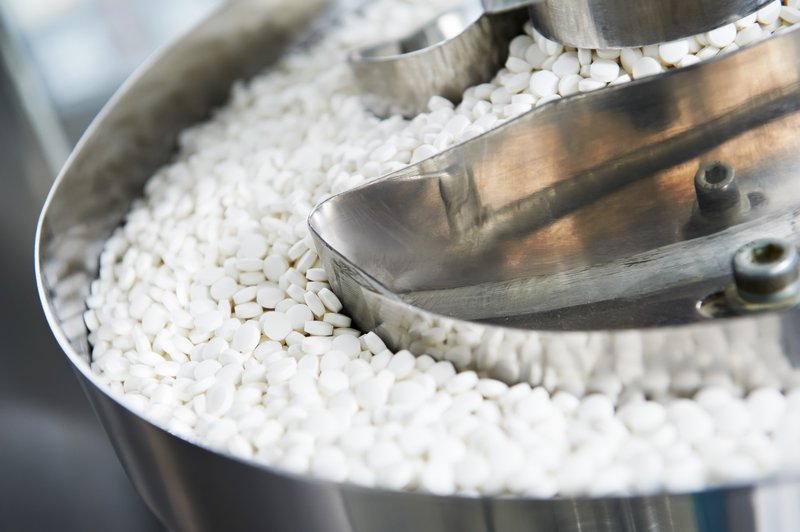World Health Day
7 April – World Health Day, 2021 – International Year of Health and Care Workers
For the second consecutive year, the World Health Day is dedicated to health and care workers. At the end of 2019, over 31,000 medical doctors, dentists, pharmacists, nursing professionals and nursing associate professionals were employed in Slovenian healthcare.
Expressing support to health care personnel worldwide
7 April has been celebrated as the World Health Day since 1950 in commemoration of the founding of the World Health Organization (WHO).
The motto of this year's Health Day campaign is "Protect. Invest. Together. " With it, the World Health Organization communicates that investments are needed in human resources, in the expansion of health care personnel, in the education system, in better working conditions and in the safety of health care personnel in the workplace. In addition, it declared 2021 - as before 2020 - the International Year of Health and Care Workers because of their key role in this difficult time.
The number of health and care workers employed in health care is increasing
According to the National Institute of Public Health (NIJZ), an authorized producer of national statistics in Slovenia, at the end of 2019 over 31,000 medical doctors, dentists, pharmacists, nursing professionals and nursing associate professionals were employed in healthcare in Slovenia.

A quarter of all medical doctors were employed in primary health care (public institutions), 35% in clinics and institutes, and 21% in general hospitals.
About 18% of medical doctors were specialized in general and family medicine.
The number of persons employed in health care is growing every year. In 2019, we recorded 17% more medical doctors, 49% more nursing professionals and 4% more nursing associate professionals than in 2015.
Most medical doctors, dentists and nursing professionals per 100,000 population in the Osrednjeslovenska statistical region
The structure of health and care workers differs by statistical regions due to the dispersion of capacities and needs.
According to data relating to the end of 2019, the number of medical doctors, dentists and nursing professionals employed in health care per 100,000 population was the highest in the Osrednjeslovenska statistical region and the lowest in the Primorsko-notranjska statistical region.
The highest number of nursing associate professionals employed in health care per 100,000 population was recorded in the Pomurska statistical region, and the highest number of pharmacists in the Obalno-kraška statistical region.
Slovenia lags behind many EU Member States in terms of the number of medical doctors and nursing professionals per 100,000 population
As regards the number of doctors per 100,000 population, Slovenia lagged behind as many as sixteen of the twenty-one EU Member States for which these data are available for 2018, although the number of medical doctors employed in health care is increasing annually.
According to the number of nursing professionals employed in health care per 100,000 population, at the end of 2018 Slovenia ranked 13th among the 16 EU Member States.
However, if we observe the number of employees in the professions of nursing professional, nursing associate professional and graduate midwife together, Slovenia exceeded the EU average; it ranked in the first third, taking into account that the number includes both nursing professionals (tertiary educated) as well as nursing associate (secondary educated) professionals.
As regards the number of dentists per 100,000 population, in 2018 Slovenia almost reached the EU average.
The number of graduates in medicine, nursing, dentistry and pharmacy is growing
In the observed period 2014–2018, a positive trend in the number of graduates in most professions was recorded: medical doctor, dentist, pharmacist and nursing professional. Larger fluctuations between the observed years can be detected by nursing professionals, which includes nurses with a bachelor of science in nursing (3-year higher education) and state registered nurses (2-year higher education) employed in health care. The number of dental graduates did not change significantly during the observed period.
In the observed period, on average around 1,100 nursing associate professionals (including midwives with secondary professional education) per year completed the programs for obtaining secondary professional education in the field of nursing.
How we assessed our health in 2019…
According to data for 2019, general health status was assessed as very good or good by about seven out of ten EU-28 residents. The share in Slovenia was 66.6% of the population aged 16+. The share of people who assessed their general health status as very good or good was the highest in Ireland (83.9%) and the lowest in Lithuania (46.1%) and Latvia (47.1%).
The shares of people who assessed their health as very good or good differ greatly among income groups
The share of people who reported being in very good or good health varies greatly between income groups, as in most other countries. In the lowest income quintile (20% of the population with the lowest income), in 2019 only 48.8% of people reported good or very good health, compared to 79.1% in the highest income quintile (20% of the population with the highest income). Both shares are below the EU average (59.0% and 79.8%, respectively).
7 April has been celebrated as the World Health Day since 1950 in commemoration of the founding of the World Health Organization (WHO).
The motto of this year's Health Day campaign is "Protect. Invest. Together. " With it, the World Health Organization communicates that investments are needed in human resources, in the expansion of health care personnel, in the education system, in better working conditions and in the safety of health care personnel in the workplace. In addition, it declared 2021 - as before 2020 - the International Year of Health and Care Workers because of their key role in this difficult time.
The number of health and care workers employed in health care is increasing
According to the National Institute of Public Health (NIJZ), an authorized producer of national statistics in Slovenia, at the end of 2019 over 31,000 medical doctors, dentists, pharmacists, nursing professionals and nursing associate professionals were employed in healthcare in Slovenia.
A quarter of all medical doctors were employed in primary health care (public institutions), 35% in clinics and institutes, and 21% in general hospitals.
About 18% of medical doctors were specialized in general and family medicine.
The number of persons employed in health care is growing every year. In 2019, we recorded 17% more medical doctors, 49% more nursing professionals and 4% more nursing associate professionals than in 2015.
Most medical doctors, dentists and nursing professionals per 100,000 population in the Osrednjeslovenska statistical region
The structure of health and care workers differs by statistical regions due to the dispersion of capacities and needs.
According to data relating to the end of 2019, the number of medical doctors, dentists and nursing professionals employed in health care per 100,000 population was the highest in the Osrednjeslovenska statistical region and the lowest in the Primorsko-notranjska statistical region.
The highest number of nursing associate professionals employed in health care per 100,000 population was recorded in the Pomurska statistical region, and the highest number of pharmacists in the Obalno-kraška statistical region.
Slovenia lags behind many EU Member States in terms of the number of medical doctors and nursing professionals per 100,000 population
As regards the number of doctors per 100,000 population, Slovenia lagged behind as many as sixteen of the twenty-one EU Member States for which these data are available for 2018, although the number of medical doctors employed in health care is increasing annually.
According to the number of nursing professionals employed in health care per 100,000 population, at the end of 2018 Slovenia ranked 13th among the 16 EU Member States.
However, if we observe the number of employees in the professions of nursing professional, nursing associate professional and graduate midwife together, Slovenia exceeded the EU average; it ranked in the first third, taking into account that the number includes both nursing professionals (tertiary educated) as well as nursing associate (secondary educated) professionals.
As regards the number of dentists per 100,000 population, in 2018 Slovenia almost reached the EU average.
The number of graduates in medicine, nursing, dentistry and pharmacy is growing
In the observed period 2014–2018, a positive trend in the number of graduates in most professions was recorded: medical doctor, dentist, pharmacist and nursing professional. Larger fluctuations between the observed years can be detected by nursing professionals, which includes nurses with a bachelor of science in nursing (3-year higher education) and state registered nurses (2-year higher education) employed in health care. The number of dental graduates did not change significantly during the observed period.
In the observed period, on average around 1,100 nursing associate professionals (including midwives with secondary professional education) per year completed the programs for obtaining secondary professional education in the field of nursing.
How we assessed our health in 2019…
According to data for 2019, general health status was assessed as very good or good by about seven out of ten EU-28 residents. The share in Slovenia was 66.6% of the population aged 16+. The share of people who assessed their general health status as very good or good was the highest in Ireland (83.9%) and the lowest in Lithuania (46.1%) and Latvia (47.1%).
The share of people who reported being in very good or good health varies greatly between income groups, as in most other countries. In the lowest income quintile (20% of the population with the lowest income), in 2019 only 48.8% of people reported good or very good health, compared to 79.1% in the highest income quintile (20% of the population with the highest income). Both shares are below the EU average (59.0% and 79.8%, respectively).
When making use of the data and information of the Statistical Office of the Republic of Slovenia, always add: "Source: SURS". More: Copyright.



.jpg)
